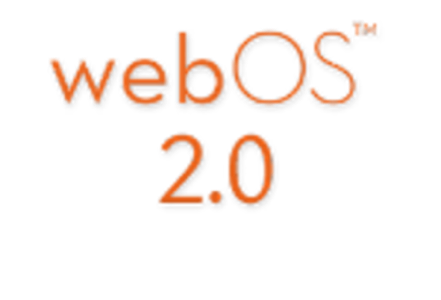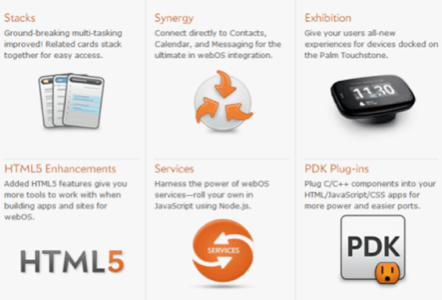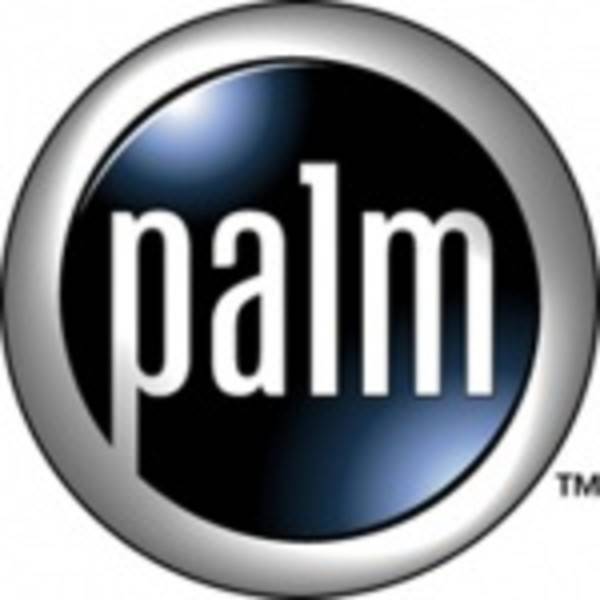It looks like HP’s investment in Palm is starting to pay off. Today, Palm’s mobile operating system has been updated to a new version: webOS 2.0. The refreshed OS, now released to the Palm developer community via a beta version of the webOS 2.0 SDK (software development kit), includes a number of updates and new features – features that already have some claiming that webOS rivals should “be worried.”

Version 2 features, now available to developers in Palm’s Early Access Program, introduces support for HTML5, an improved multi-tasking interface through use of “stacks” – a feature for stacking related screens like a deck of cards, plus more advanced universal search capabilities, support for JavaScript services and a new set of APIs (developer tools) for Palm’s “Synergy,” the popular webOS feature which automatically pulls contact data from social networks like Facebook and webmail services into your phone for use with contacts, calendar and messaging programs.

What’s New in webOS 2.0
The release of webOS 2.0 represents the biggest update yet, notes the page on Palm’s Developer Center detailing the new features. And, by the looks of it, the list does include several compelling upgrades:
Stacks
The new Stacks feature extends Palm’s “card” metaphor that allows users to interact with screens as if they were individual cards. To close an app, for example, you just drag the card off the screen and “poof!” the program is closed. With Stacks, webOS 2.0 will automatically group related cards in an effort to reduce clutter and to allow for quickly switching between tasks. Users can also manually create stacks via drag-and-drop to manage them outside of operating system control. Developers don’t have to do anything special to use Stacks – new cards resulting from user actions within an app will be automatically grouped with the app’s main card.
Just Type
Just Type is the new name for webOS’s Universal Search feature which allows users to search for things both on the device and the Web. One of the new enhancements to this feature is something called “Quick Actions.” This lets users perform routine tasks like updating their Facebook status, setting reminders, adding items to a shopping list, start an email and other common tasks. Also new is an ability for developers to expand their app’s capabilities by hooking into Just Type either through indexing of data stored on the device or through the creation of their own custom Quick Actions.
Exhibition
Exhibition is a screensaver-like program that runs when the phone is docked. It can display slideshows, a clock, stock updates, news, or sports tickers but can also be customized through apps created by developers.
Synergy APIs
Synergy is remembered as the feature which merged Facebook contacts into the Palm Pre’s address book, but it also supports Google, Microsoft Exchange, LinkedIn and Yahoo. Contacts are pulled into the phone’s address book to show things like birthdays, work and personal calendars side-by-side, IM and text messages combined into a single conversation and more. In webOS 2.0, Synergy APIs are being made available to developers for use with connectors for contacts, calendar and Messaging and later for other webOS data types too. For example, developers can use the connectors to connect a chat or IM app with the webOS Messaging app, access contacts stored on a social network or online community into the Contacts app, or access other calendars or online events within the built-in Calendar app.
Under-the-Hood: HTML 5, JavaScript, PDK Plug-ins
Other advances in under-the-hood technologies include support for HTML5 features like enhanced canvas, Web storage, geolocation and application cache. Also new is built -in support for the Node.js runtime environment and PDK Plug-ins, which allow developers to build games and other immersive apps in C/C++. This latter feature is currently in beta, but with webOS 2.0 the beta period will end and developers can begin to distribute apps that use these plug-ins.
Does HP Have a Shot with webOS?
Before Google’s Android emerged asthe iPhone rival it is today, many saw Palm’s WebOS as a possible contender to take the iPhone down a notch from its dominant position among smartphones. Wall St. Journal’s Walt Mossberg even called the Pre “a powerful competitor” to the iPhone when it launched as well as a “beautiful, innovative and versatile hand-held computer.” Hewasn’talone in this sentiment.

The idea of the Pre as an upstart “iPhone killer” soon lost its appeal, though, when the webOS-powered phone and its smaller sibling the Pixi, simply didn’t sell. It was said that the lackluster sales may have had more to do with the hardware used, the carrier or the lack of developer buy-in, and not the OS itself, however.
But HP, desperately needing to re-enter the mobile game, clearly thought webOS still had potential, and not just for mobile, but for tablet computing as well. In July, HP registered the trademark “PalmPad” and, earlier this month, confirmed its plans to ship a webOS-based tablet early next year. For the most part, the tech community’s initial reaction was positive, upon hearing the acquisition news this April, with most hoping that HP could be the company to breathe new life into the dying, but delightful, webOS platform.
What remains to be seen, however, is whether or not tablet computing will actually take hold as a new trend in computing, regardless of the operating system powering the device, or if the iPad is simply another example of Apple releasing a product (like its iPod) that dominates a market. Android, although now outpacing iPhone shipments in many markets, most notably the U.S., has yet to emerge as the OS of choice on any iPad rival. There are many Android tablets in the works and some for sale in limited markets, but no major releases as of yet. It’s far too soon to say if an Android tablet will overtake the iPad or vice versa. In fact, it’s just as possible that HP’s “PalmPad” could be the real iPad competitor, for that matter. That’s what HP is hoping for, of course. But it is notable that HP, a personal computing powerhouse in this industry, has embraced a new operating system that’s not Microsoft Windows. If marketed well, priced appropriately and – most importantly – if HP’s brand name clout can attract developer attention, it’s fair to say the “PalmPad” has a real shot.









